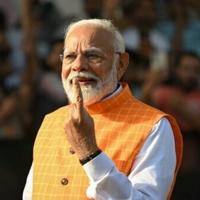Indian Prime Minister Narendra Modi has shifted his country away from its secular traditions towards Hindu-first politics, gaining Western attention after initially facing criticism.
Modi’s rise was clouded by allegations of involvement in religious riots and during his time in office, there has been a rise in discrimination against Muslims and other minorities.
After a decade in power, Modi’s party was forced into a coalition government with minor parties following a recent election, signaling a humbling moment for the 73-year-old leader.
Beginning his third term, Modi now relies on a variety of smaller parties for governing.
Supporters admire Modi’s strong leadership, shaped by his association with India’s majority religion and his emphasis on his humble beginnings.
Modi’s political career began in Gujarat, where he was accused of failing to contain deadly sectarian riots in 2002, leading to the deaths of over 1,000 people, mostly Muslims.
Despite these controversies, Modi’s popularity grew in India, and he became known for his commitment to Hindu interests and his belief that secularist forces had held back the country.
Some critics have raised concerns about the prosecution of Modi’s opponents and restrictions on the media, while India’s Muslim community has become increasingly worried about their future.
Despite these issues, Modi has been seen as a valuable ally by Western nations seeking to counter China’s influence in the region.
Modi has claimed credit for India’s growing global role and has pursued projects to rewrite history by erasing symbols of foreign conquest, culminating in the recent opening of a Hindu temple in Ayodhya.
During the temple’s consecration, Modi declared that India was “rising above the mentality of slavery” and creating a “new history.”
sai/gle/pjm/pbt





